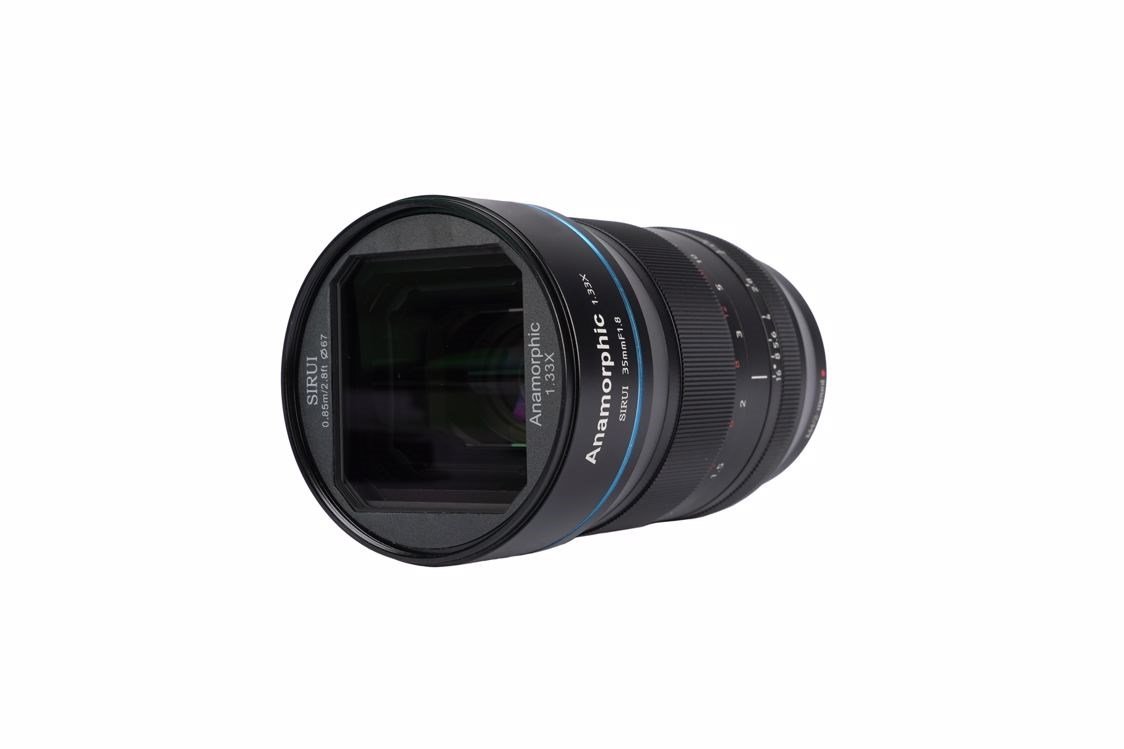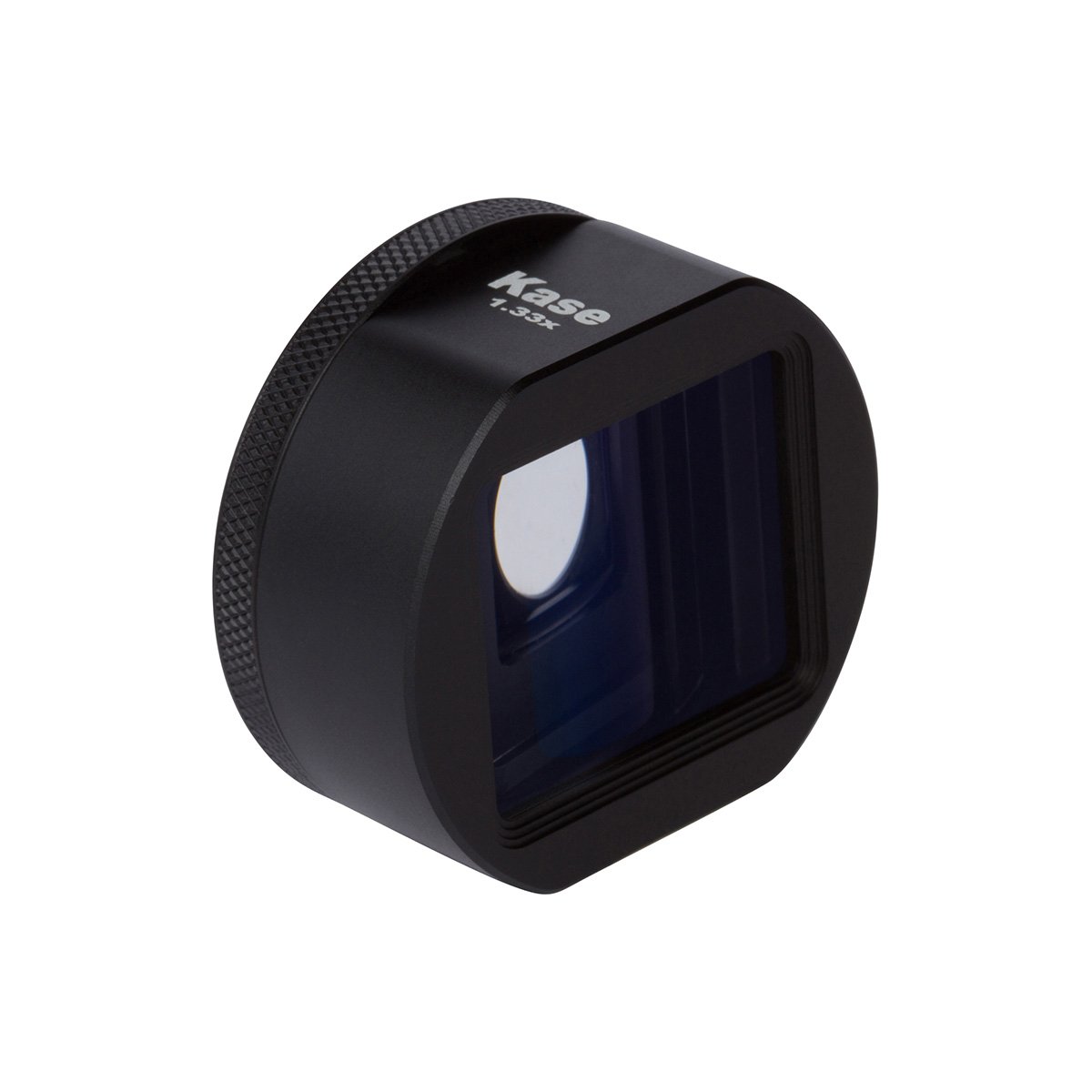Anamorphic Lens: What It Is & Why You Should Use It
Hire film gear from local filmmakers.

Hire film gear from local filmmakers.
Anamorphic lenses are an asset in any filmmaker's toolbox. As a creator, you're faced with tough choices when it comes to your masterpiece. However, when asking yourself 'How do I make this story look great on the screen?' that's where an anamorphic lens is pretty badass.
The anamorphic lens is a filmmaker favourite, mainly because of the look it brings to a shot. Check this guide out before considering your next lens hire or camera hire!
If you're already familiar with the 'what's' and 'why's' go explore the best anamorphic lenses for camera or if you're looking for a more affordable solution check out our guide on best anamorphic lenses for your phone.
In this article you’ll find out about:
- What is an anamorphic lens?
- When was it first used?
- What does the anamorphic lens do?
- Why should you try anamorphic optics?
- 5 anamorphic lenses to buy
- Anamorphic vs. spherical: what are the differences
- How to use the anamorphic lens: Tips and considerations
- Using the anamorphic lens for photography
- 6 Tips when shooting with an Anamorphic lens
- Anamorphic format
- How to de-squeeze
What is an anamorphic lens?
Think of a locked door, behind that door there’s the widescreen cinematic imagery we know from all our favourites blockbuster movies. Then consider the anamorphic lens – that’s the key.
Anamorphic lenses have over time become a runaway favourite for everything from professional cinematographers to up-and-coming indie filmmakers. Their ultra-wide rectangular aspect ratios, long horizontal flares and their characteristic oval bokeh has made these lenses the ultimate go-to in the filmmaking world.
Moreover, the anamorphic lens changes the dimensions of an image in one axis; allowing for a wider field of view and squeeze that same image onto a narrower sensor. Essentially, these lenses maximize the use of the sensor by fitting more footage onto the sensor.
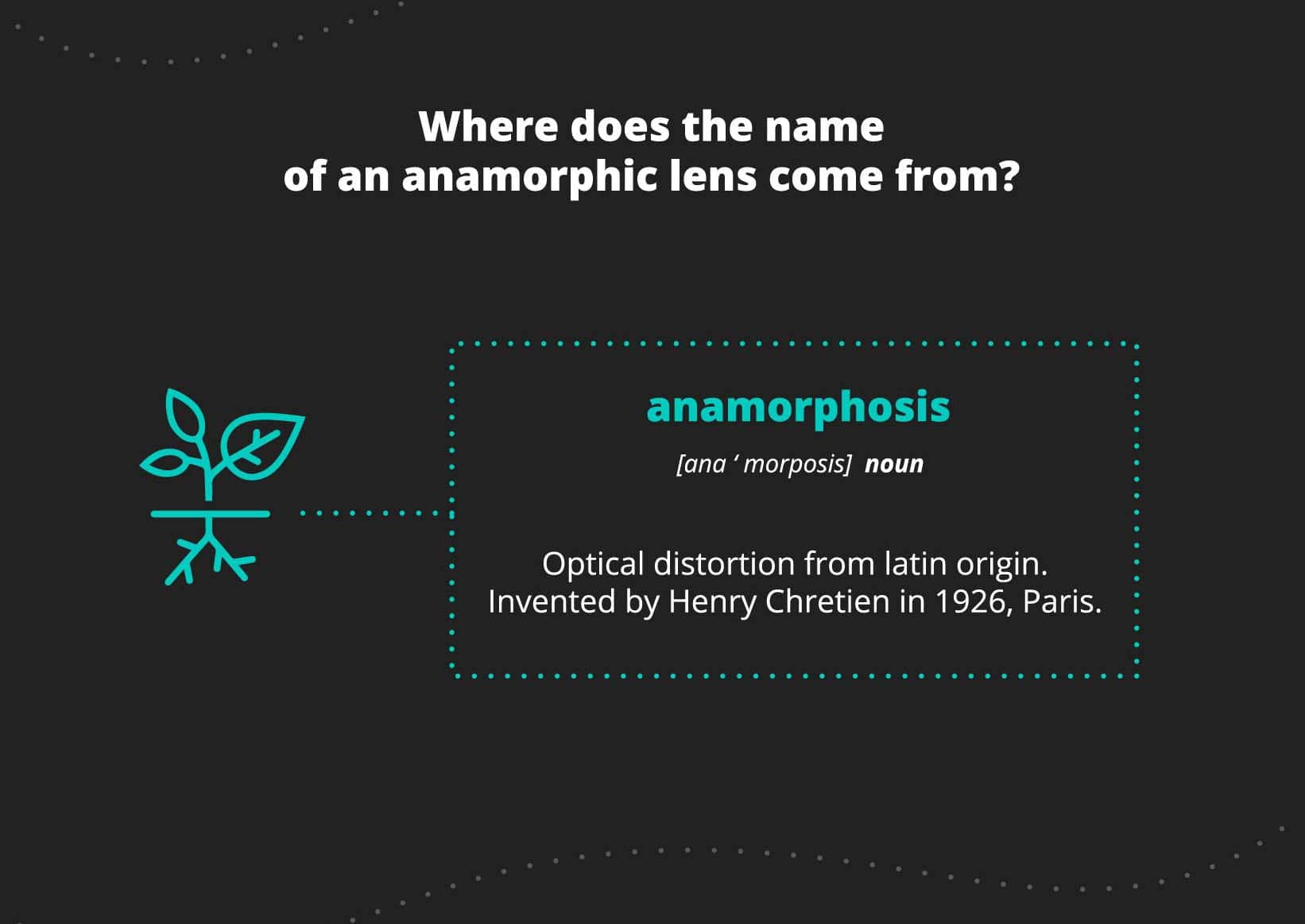
It's important to note that the images captured through your anamorphic lens need to be stretched in post-production or when projected. Failing to do this will quickly turn your magic carriage into a rotten pumpkin!
When was it first used?
I hope you like war stories – because this lens is part of one! The anamorphic lens was first used on French battlefields, during the First World War. The lens provided soldiers in tanks with a wider look outside of tanks – quite clever actually (sorry, Germany).
Thankfully, we no longer have tanks filling the streets and so the anamorphic lens has found itself another purpose – in the filmmaking industry. 'Revolutionising the shot' just as it did 100 years ago – that's pretty impressive.
What does the anamorphic lens do?
After the Second World War - yes, the lens made a comeback in World War Two -the anamorphic lens left the army and joined the toolbox of filmmakers.
The film industry quickly recognised the potential of anamorphic lenses, especially the ability to capture wide-angle shots to combat the rise in popularity of the televisions - which were at the time finding themselves in many American households.
Shots from this lens created an exciting widescreen effect which could not be replicated in the home, forcing Americans to go to the cinema. Plot twist, then streaming services like Netflix and HBO came, making every living room a cinema. But that's another story. Where was I?
Widescreen was pulled off by using lenses that capture a wider aspect ratio and squeezing the image onto a narrow film strip. This is known as CinemaScope, a filmmaking process in which a motion picture is projected on a screen, with the width of the image approximately two and a half times its height.
Shoot a wide field of view
Cinematographers worldwide love anamorphic lenses, and for good reasons! They help achieve that epic cinematic look. Yes, I said epic!
Many films you love are shot in this format. Ever seen Pulp Fiction?
The lenses provide an incredible aspect ratio. You can capture 2.39:1 aspect ratio footage using your regular camera. This gives a wide field of view that is distortion-free in the centre. Even with close-ups, the distortion will be minimal. This wider ratio became known as CinemaScope.
It has a very shallow depth of field in the centre of the shot. The compression means you can capture much wider shots from the same spot - ensuring you don't miss Travolta and Thurman bust out their dance moves.
Be aware, however, that most sensors today, will have a wider aspect ratio than 35mm, so if you choose to opt for 2x anamorphic lenses this will produce a super wide ratio.

Widescreen and black bars
Anamorphic lens footage is also recognised for its cinematic black bars. This is what happens when you attempt to squeeze a wide aspect ratio onto a screen that has a narrower one. This is because the screen has to fill the shot side to side.
Anamorphic lens flares and bokeh
Lens flare is when the lens and sensor capture light – yep, that’s pretty much it. The thing is the anamorphic lens has a pretty unique type of flare.
Many professional filmmakers fall in love with the anamorphic lens due to this exact trade – they create a horizontal stretched lens flare that can appear like stripes of light – basically just saying, that they will add quite the look and feel to your scene that no other lens can.
Aside from horizontal lens flares, you'll get an oval bokeh. Bokeh is the way the lens captures out-of-focus lights in the background. Just to compare, a traditional lens would produce a ball-like bokeh rather than oval.
Why should you try anamorphic optics?
When it comes to deciding whether to use an anamorphic lens, it is very much down to you and your personal taste and preferences.
As Roger Deakins once said: 'It's not about the type or brand of your lens, it is about what it does for your story'. Clever words, Sir Deakins!
Choosing the anamorphic lens also means choosing to get a wide aspect ratio, an incredible depth of field and a distinct, oval-shaped bokeh.
And if you think your next creation needs a sense of warmth and closeness to it, then the anamorphic lens might be the ideal choice.
Try it for yourself
An anamorphic lens is a unique lens. My advice – just try it out. I can tell you about how awesome it is till I'm blue in the face. Ultimately, it all depends on your preferences and the kind of mood you want to convey.
I will leave you with this, though: the anamorphic lens looks fantastic on screen and gives a nostalgic look. Experimenting with it might even make you a better filmmaker. It introduces different framing and allows greater detail in each image.
Best anamorphic lenses to buy
You can also read our complete guide to finding the best anamorphic lenses.
Anamorphic vs Spherical: What are the differences?
When in production you will typically have to choose between two classes of lenses, the anamorphic or the spherical.
Spherical lenses have less glass for light to pass through and simpler mechanics. They tend to produce sharper images with minimal distortion across the entire picture.
The anamorphic lens is often identified by its reduced sharpness, increased distortion, and falloff –the closer we get to the edges of the image, the more distortion and softness we get. It also produces far more dramatic lens flares; this is because of the extra glass inside the body.
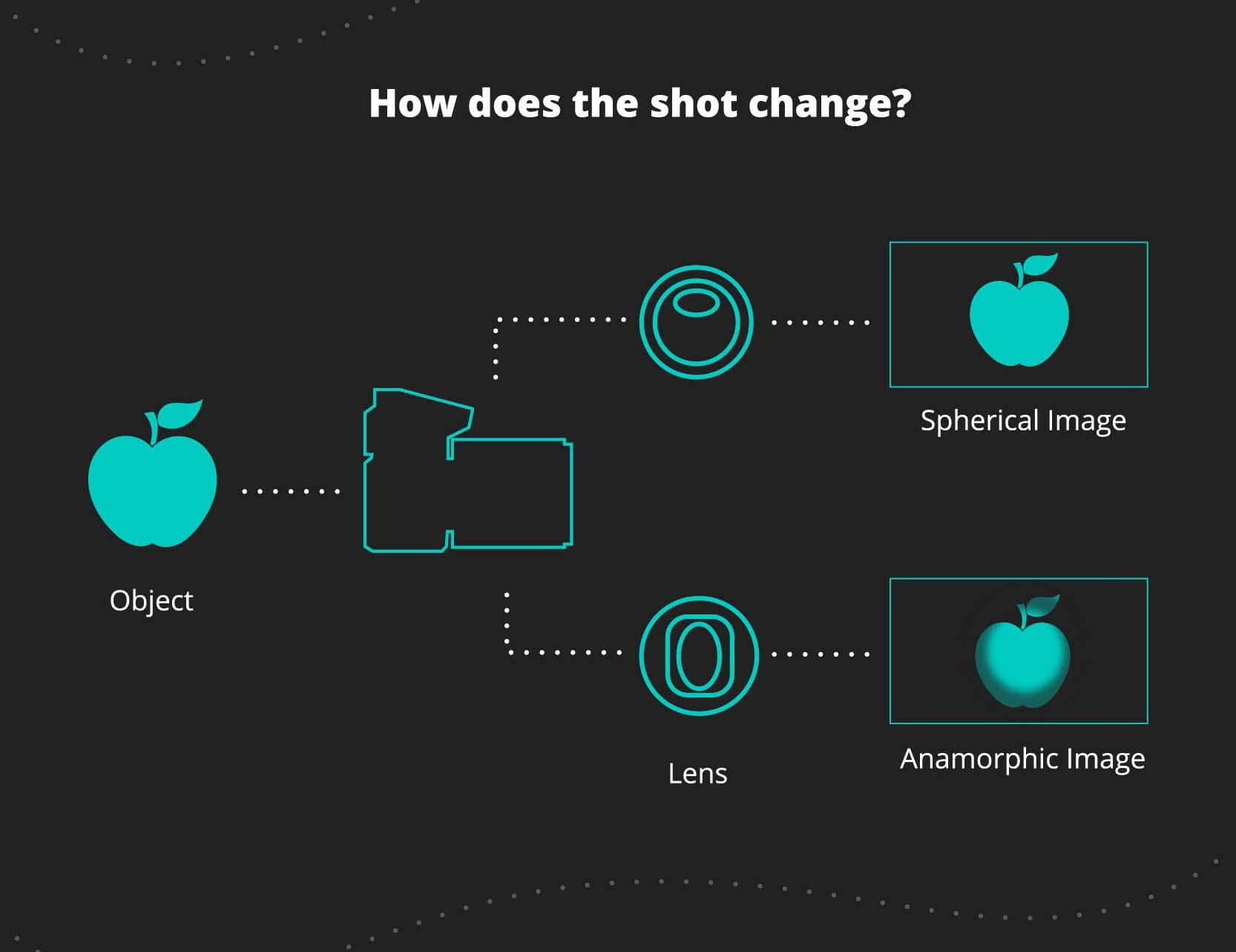
Frame size and aspect ratio
Fair warning, I'm going to have to use some jargon in the following explanation – continue at your own risk. For anamorphic footage, the frame size will typically be either 720x576 for PAL or 720x480 for NTSC. To convert these into widescreen 16:9 non-anamorphic square pixel formats, you need to stretch them horizontally.
Anamorphic widescreen was a response to a shortcoming in the flat, spherical widescreen format. With a non-anamorphic lens, the picture is recorded such that its entire width fits within the film's frame, but not its full height.
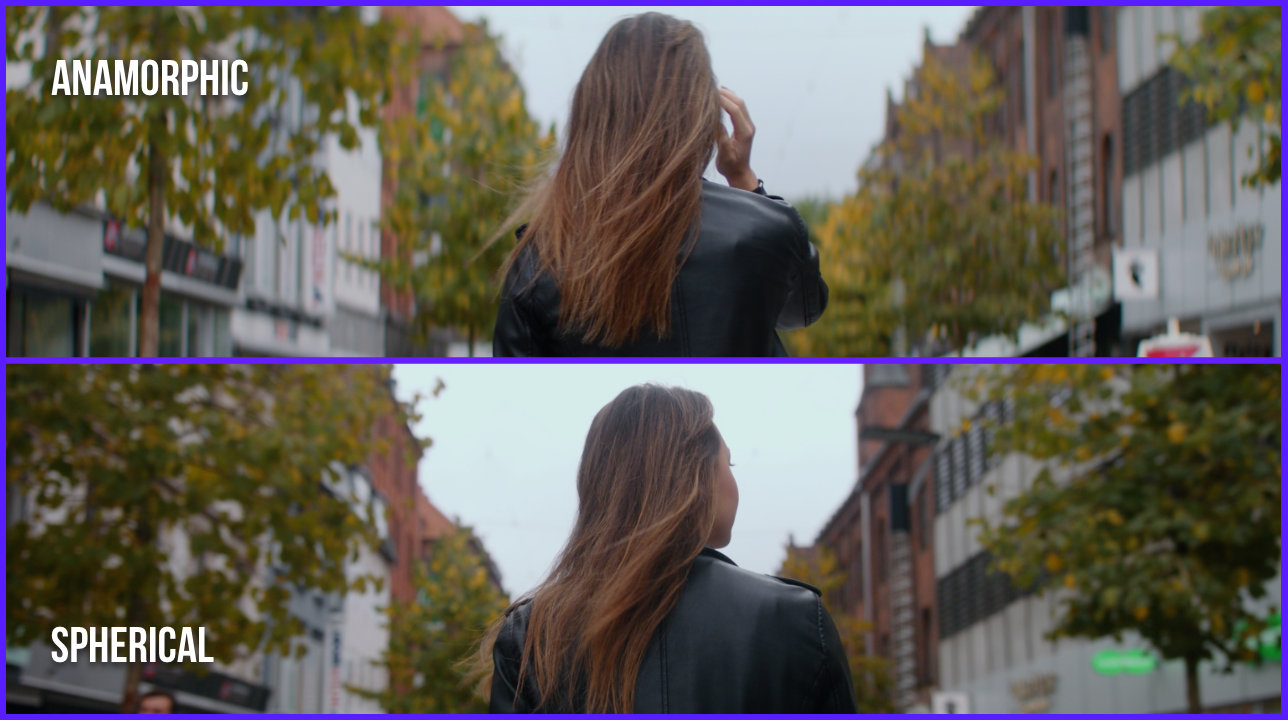
Fewer options and more expensive
I've spent some time now on describing the wonders of the anamorphic lens. However, this wouldn't be a useful guide if I didn't outline some of its pitfalls.
Anamorphic lenses are more expensive; this is due to their rather complex construction. Also, with anamorphic lenses, you're likely to have fewer options to choose from, most are built in 40, 50, 75 and 100mm focal length. In contrast, spherical lenses have more focal lengths to choose between.
Spherical lenses tend to be faster, resulting in a lower t-stop such as T1.3. to T2 - allowing for more light. Anamorphic lenses usually have a stop between T2.8 and T4, which lets less light through.

Final product
As a filmmaker, it's nice to know all that technical stuff, but what you need to know is how the final product looks.
Anamorphic footage has a softer, more cinematographic and artsy feel. The bokeh and lights are cubic or oval. Anamorphic flares are stretched horizontally and will give your footage that aesthetic look. With the anamorphic lens, you capture a wider frame, so keep in mind that it can make a set more expensive.

How to use the anamorphic lens: Tips & considerations
Which lens to choose?
It's difficult picking the right lens to match your style, especially with the endlessly available cameras and lens combinations.
In general, there will be three main things to consider when choosing your anamorphic lens:
- Size and weight of the anamorphic
- Single or dual focus
- Your DSLR and prime lenses
What is a decent size and weight for an anamorphic lens?
Large format lenses
The full-size range is a great option for the budget-conscious filmmaker. Especially if you shoot with a locked-down tripod, this means models like Isco & Schneider.
These are the large format lenses. Early models of these are approximately 1.3kg in weight and around 25cm in length.
If you want an alternative, take a look at the replicas. Japanese Kollomorgen or American Bell & Howell are also great options.
Medium format lenses
Are you looking for a lighter rig? Perhaps, you're recreating the chase scene from Casino Royale? (so, every scene!). Then medium format lenses like Isco Micro and Kowa B&H would be perfect for you. These lenses combine the build quality of large format lenses with the sharpness of smaller packages.
Isco Micro is only 0.45 kg in weight and great value for most DSLR shooters.
Small format lenses
Small format lenses like Baby Hypogonar and Baby Isco provide an anamorphic effect in the smallest possible package.
Typically, these lenses have a diameter no wider than 52mm. So, you will need a prime taking lens with a smaller front diameter to avoid light transmission loss.
Just, remember that small format lenses might not stand up to professional standards.
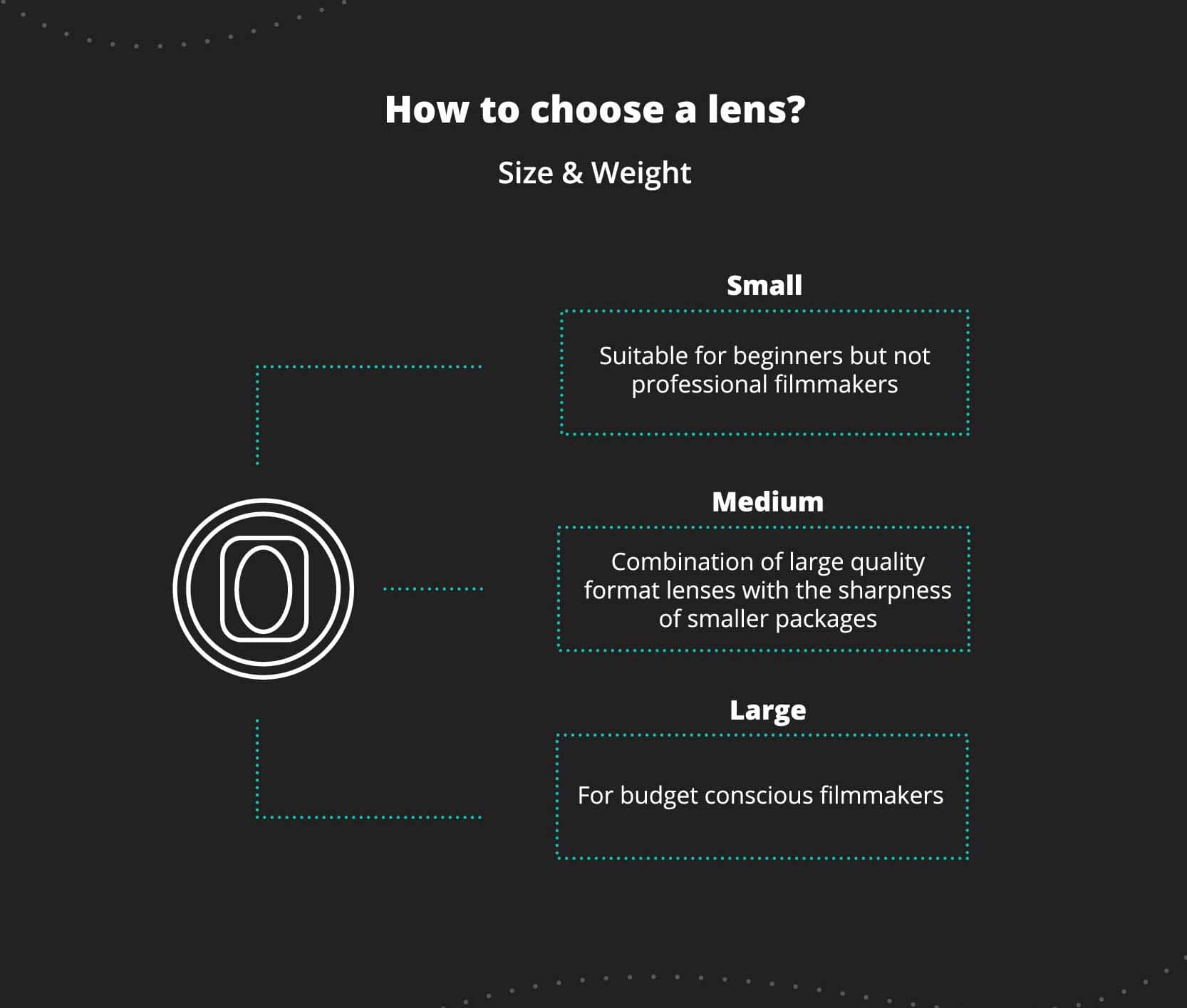
Single or dual focus anamorphic?
Most anamorphic lenses are focused by both the prime taking lens and the anamorphic lens. Dual focusing is not very difficult, but there are filmmakers who prefer single focus, especially when working with narrative shoots.
Pure single focus anamorphic lenses
A few anamorphic lenses, including Isco Rama 36, 54, can be focused by setting your taking lens to infinity and focusing only with the anamorphic. This solution is the easiest to shoot with.
Dual focus anamorphic
Some dual focus systems use one follow focus to calibrate both anamorphic and taking lenses. Brands to keep an eye on here are Rectilux and Rapido.
These don't affect the quality of your anamorphic lenses with the extra optics. However, they can be difficult to calibrate, especially when changing lenses in the field.

DSLR and prime lenses?
Well, here's the kicker, not every anamorphic lens works with every prime lens and DSLR camera.
Generally, you should use a 2x anamorphic lens with an 85mm prime lens on full-frame. A 50mm lens on APS-C/Super 35, and 43mm lenses on Micro 4/3.
Some lenses, such as the Isco Micro Anamorphic Lens, can perform well with a full-frame camera and provide a wide anamorphic view.
Remember, that with a 2x anamorphic lens, you are doubling your field of view. So, an 85mm lens with an anamorphic attachment will look like a 42.5 mm canvas to paint your image on.
Anamorphic lens photography
We’ve talked about the basics of shooting with an anamorphic lens and what it will bring to your film – but what about what the anamorphic lens will do for your photo?
Well, it’s not because when we use the anamorphic lens for photos instead of movies, you’ll suddenly get an entirely new set of characteristics – a spade is a spade, that doesn’t change. You’ll still have your oval bokeh, ultra-wide aspect ratio and long horizontal flares, that’s not going anywhere. But you will have to keep in mind that you go from a moving, rolling subject to a still shot.
When using the anamorphic lens for photography your image will be distorted as it is taken but will then undistort to a normal shape when being projected or displayed.
Also, the image format that an anamorphic lens produces is pretty unique. Remember that feature on an iPhone where you can take panoramic formats pictures if you hold the phone real still and move it really slowly? Well, that pretty much the same here, you get a wide image that engages some rather different compositional properties – and no, you don’t have to wave it awkwardly around trying to get a decent shot.
When it comes to still photography, we usually use whole numbers when discussing the aspect ratio of any given formats, in anamorphic this works a little bit different. Popular aspect ratios within the anamorphic universe include 2.35:1, 2.39:1 and 2.40:1, using 1 as the height of the frame. As mentioned previously the more “official” standard of a widescreen projection is 2.39:1, but that’s standard, you can always go different.
6 tips for shooting anamorphic
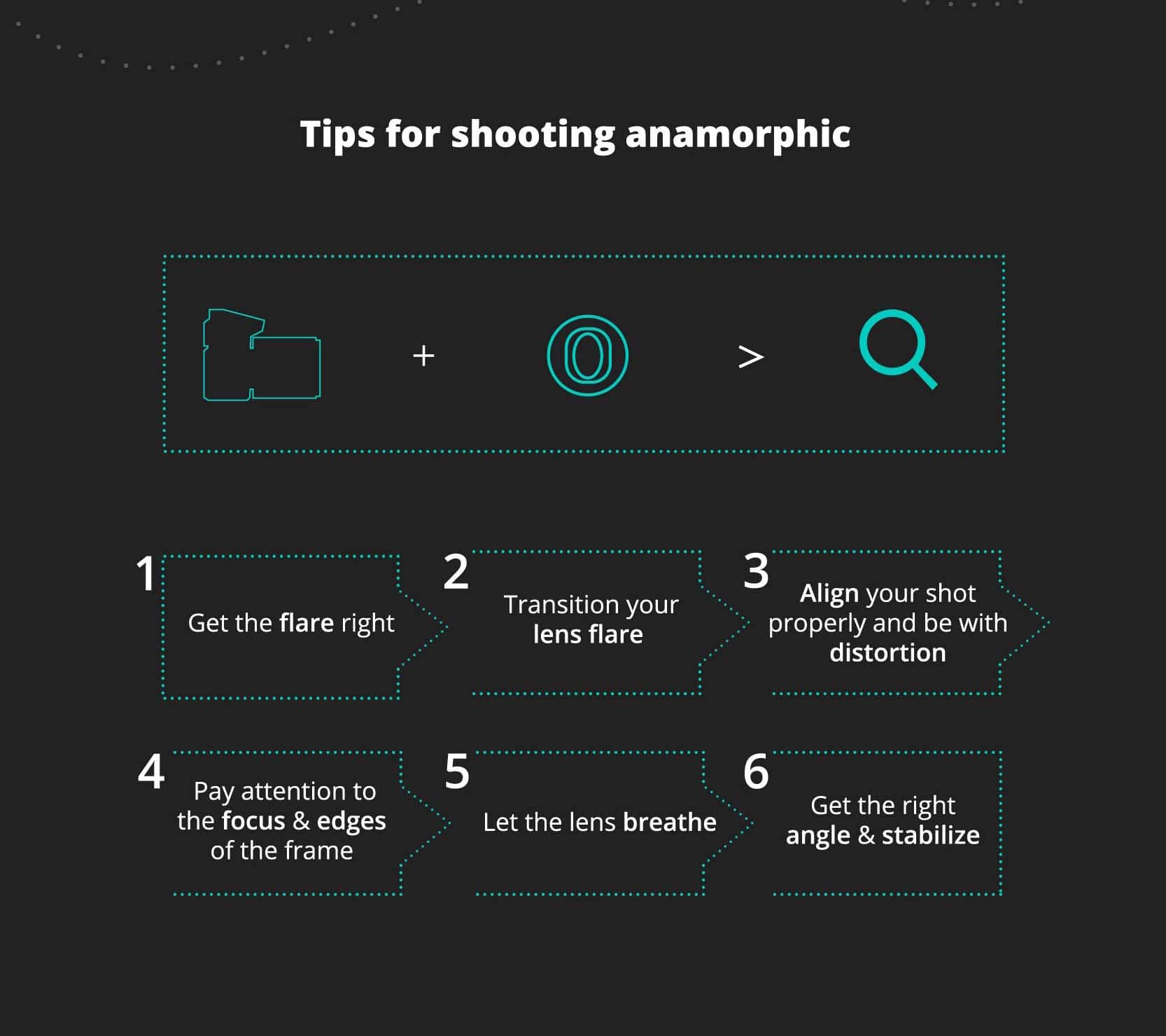
1. Flare
If you need a drastic flare, shoot directly into the light. For softer flare, you shoot from the side or have the light positioned towards the edges of the image.
Be aware that flares can be distracting and take attention away from the actual picture. Consider your personal preferences and what you, as a filmmaker, are shooting. Just keep in mind, that overdoing the flares can be very distracting.
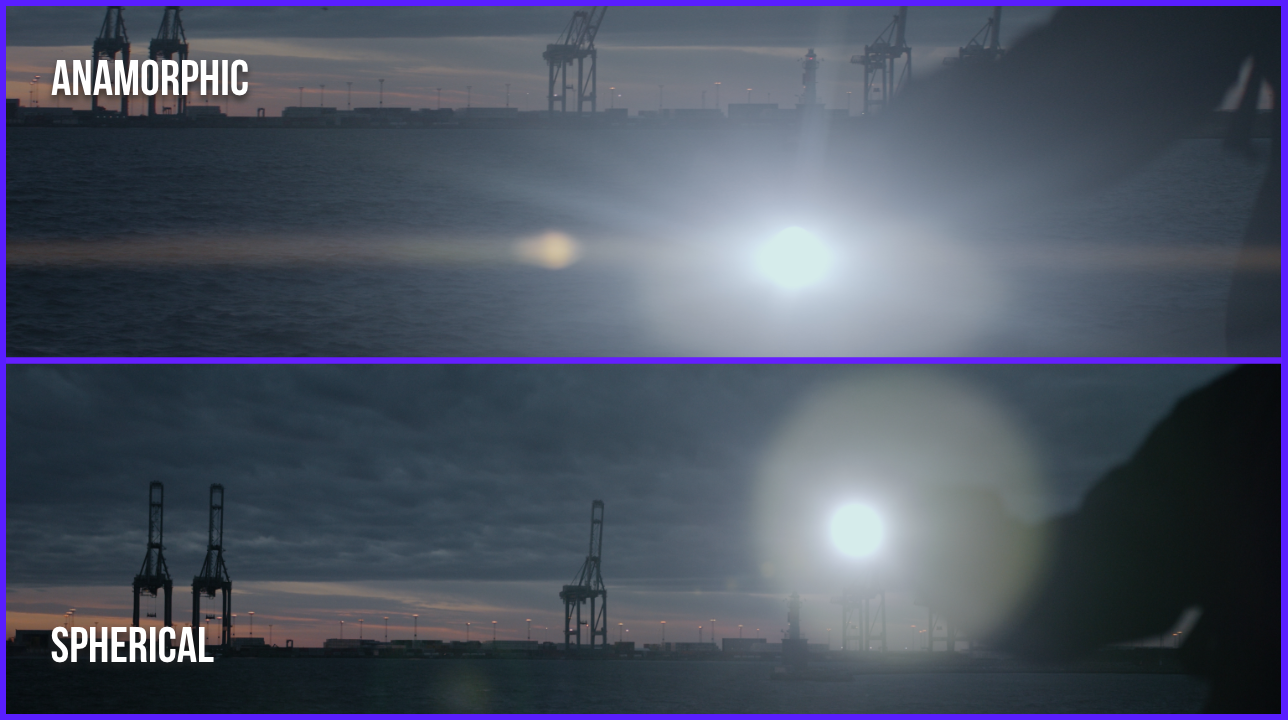
2. Transition your lens flares
Make the lens flare appear or hide it behind an object and then make it appear again. This gives a more organic and authentic look and feel.
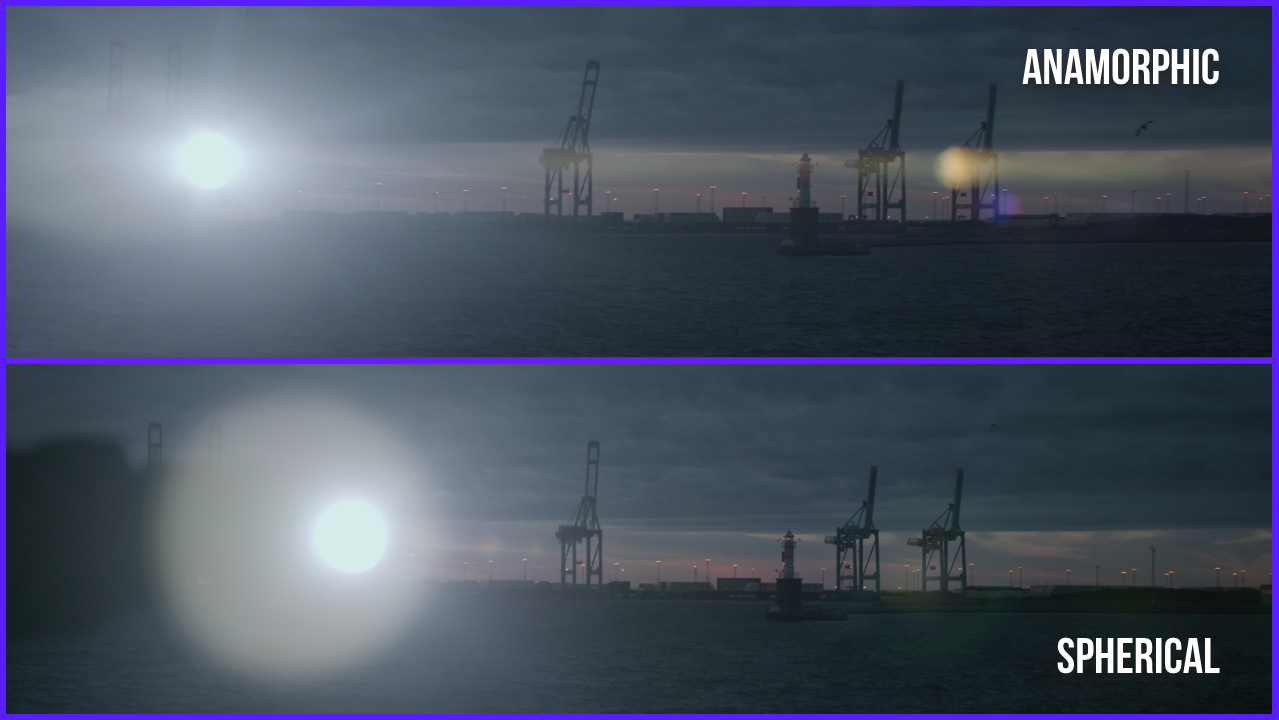
3. Proper alignment and distortion
Always check the alignment to prevent an image from being distorted.
When using an anamorphic lens, pay extra attention to the edges of the frame. So that when you pan the camera left and right, you can place subjects in certain parts of the frame.
Anamorphic lenses force you to frame what is important in the centre of the frame. Panning the camera creates distortion, so the image is not nearly as clean, sharp or precise on the edges as in the centre.
4. Anamorphic focus fall-off
Aside from distortion, you have to consider the focus and how sharp and accurate the lenses are.
When you shoot something that is important don't suddenly focus on the edge of the frame. The subject will not be as sharp as it would have been in the centre of the frame.
Working with changing focus with an anamorphic lens is much stronger and faster which might be a little too distracting for some people.
5. Lens breathing
When you rack focus on the anamorphic lens the subject in front of the lens morphs and is slightly transformed.
As an example, when you try to rack focus into the background, you'll notice how the person's body and face changes.
So, when shooting with anamorphic, you might not want to have as strong a rack or as fast of a focus rack, because it can be a little distracting.
6. The right angle and stabilisation
You don't want the image to be unnatural or to shoot when the sun is at its highest – it is easier when the sun is lower, and the lens is set up to capture footage with awesome flares.
It is even more important to get smooth footage with an anamorphic lens – but you might have to use a gimbal.
These tips can help you when choosing whether to use anamorphic for your next piece. Remember, like most things in life; practice makes perfect. So, allow yourself room for learning and improving your skills as you get to know each other.
Anamorphic format
Anamorphic format is the art of shooting a widescreen picture on standard 35 mm. This style is so popular that small anamorphic lenses have been produced for mobile phones for as little as $150. I'll just repeat that: lenses for less than $150 – that's like finding a Picasso at your local flea market.
De-squeeze!
The anamorphic lens is mostly used for cinematography but can be used for photography, as long as it gets desqueezed – just as with video.
How to de-squeeze an image in Premiere?
1. Select your clip in the timeline to de-squeeze.
2. Click on “Modify”
3. Select “Interpret Footage”
4. Under “Frame Rate”, you’ll see a section to input “Conform To”. Select HD Anamorphic value.
Hop over to MOMENT for more tips, where you can find out how to desqueeze your anamorphic footage in multiple programs with a few simple steps.
Interested in trying out anamorphic lenses? Rent it now on Wedio (Available in Denmark, Berlin, Amsterdam, and London)
Read our other guides to kickstart your video ventures. Check out our guide for finding the best camera for Youtube or for streaming. If you're already on the pro side of things, check out our guide for the best cameras for video professionals

FAQ
What is an anamorphic lens?
It’s a special type of lens that gives a unique, cinematic look. It changes the dimensions of an image in one axis. This means you're taking a wider field of view and squeezing that same image onto a narrower sensor.
How does an anamorphic lens work?
The anamorphic lens projects an image that is compressed into a more narrow version, giving utilizing the full filming area of a 35 mm frame. This is then corrected in post-production, to properly display the image.
What are the differences between an anamorphic and a spherical lens?
Spherical lenses have less glass for light to pass through and simpler mechanics. They tend to produce sharper images with minimal distortion across the entire picture. The anamorphic lens, however, is often identified by its reduced sharpness, increased distortion, and falloff – this is where the closer we get to the edges of the image, the more distortion and softness we get. It also produces far more dramatic lens flares; this is because of the extra glass inside the body.
Why are anamorphic lenses so expensive?
Anamorphic lenses are more expensive due to their rather complex construction.
Can I rent an anamorphic lens?
Yes, you can easily rent an anamorphic lens on Wedio. Rent or subscribe to it now on Wedio.
Rent anamorphic lenses from local creators.
Save up to 40%.
Global Coverage included.
https://images.wedio.com/images/listing_images/images/1926371/thumb/mieten_leihen_moment_anamorphic_lens_for_mobile_mit_wedio__2_.png
https://www.wedio.com/en/anamorphic-lenses
https://images.wedio.com/images/listing_images/images/1931816/thumb/sirui-35mm-f18-anamorphic-lens--sony-e-mount--m43-46028741.jpeg
https://www.wedio.com/en/anamorphic-lenses
https://images.wedio.com/images/listing_images/images/1927439/thumb/f21bb913d01c75ee248de294e9ed844a-1.jpg
https://www.wedio.com/en/anamorphic-lenses
https://images.wedio.com/images/listing_images/images/1931785/thumb/sirui-50mm-f18-anamorphic-lens-emount-sony-22099342.HEIC.jpg
https://www.wedio.com/en/anamorphic-lenses





















